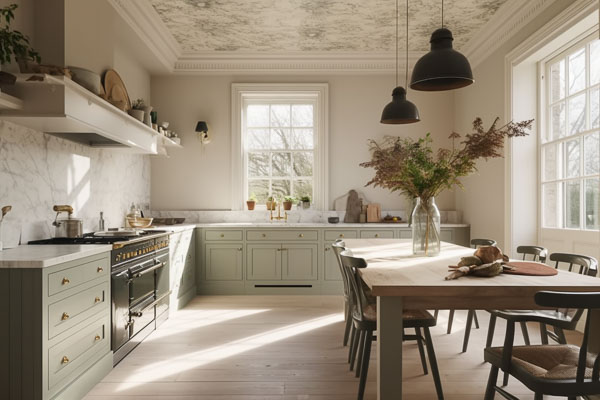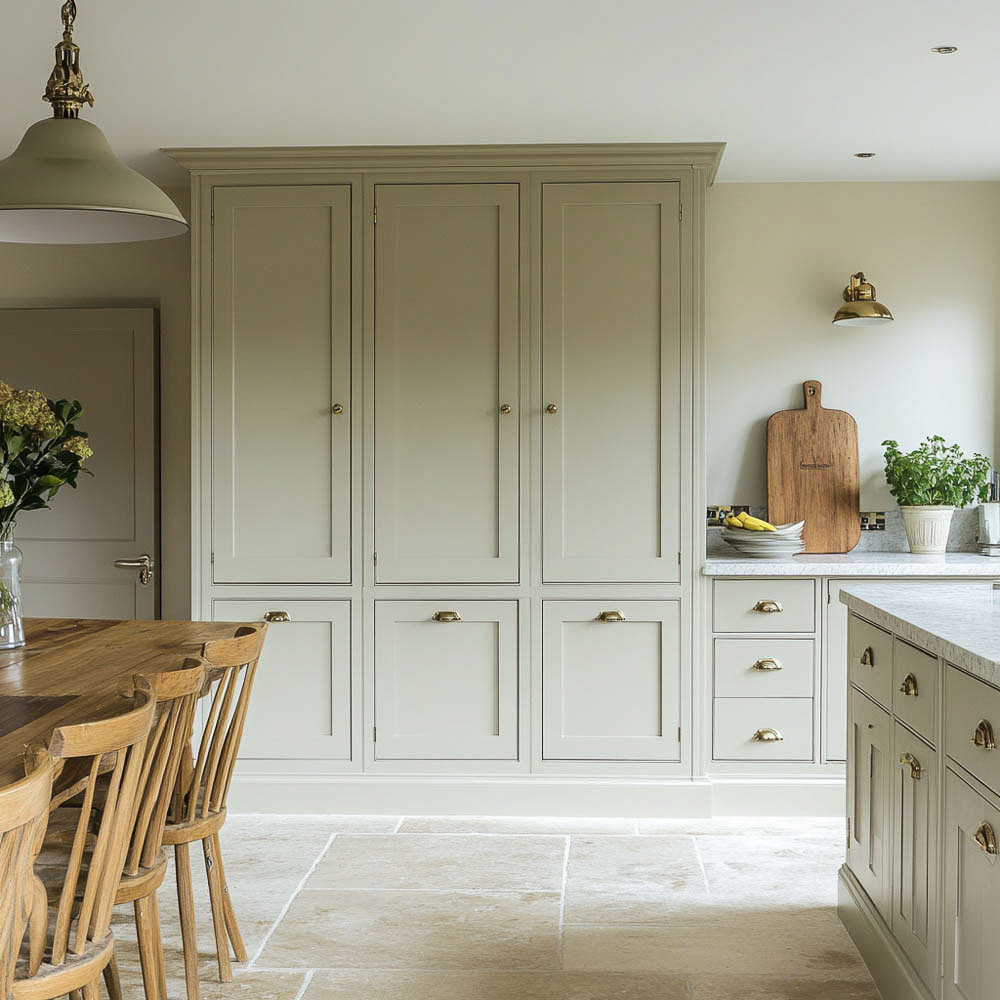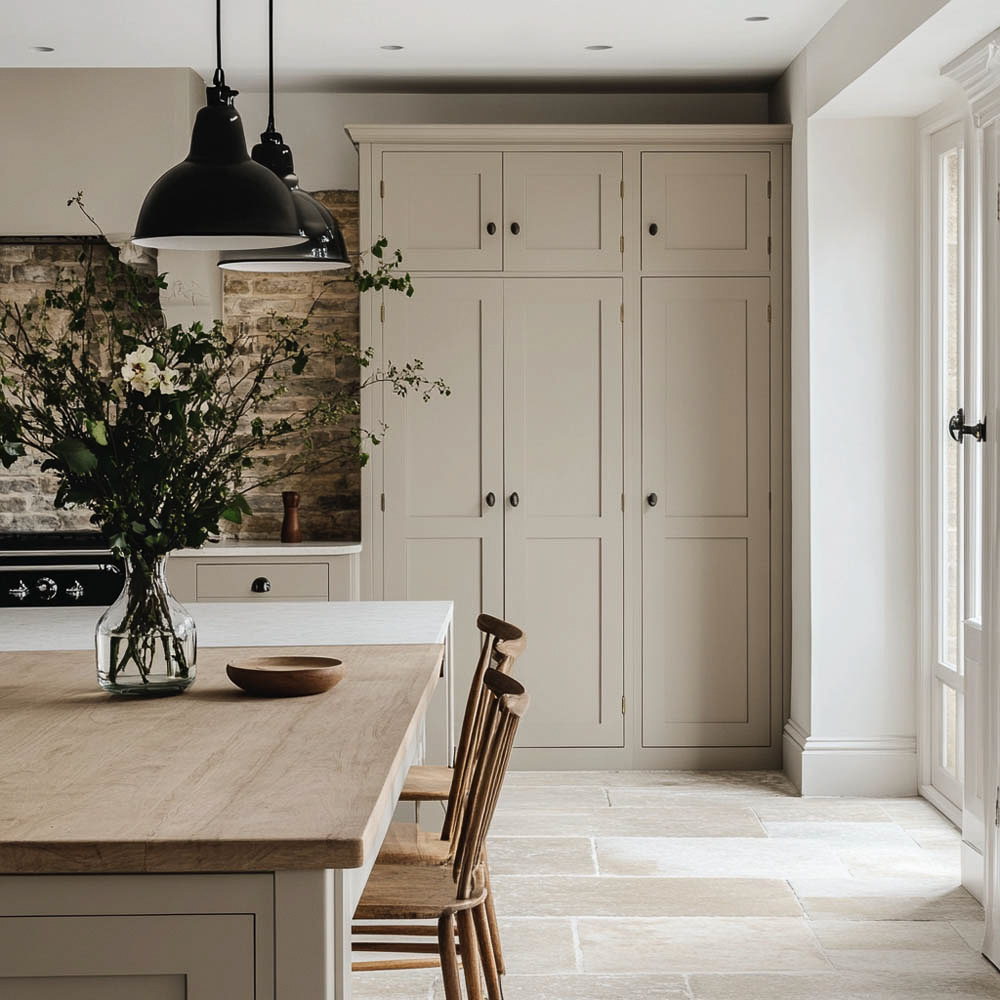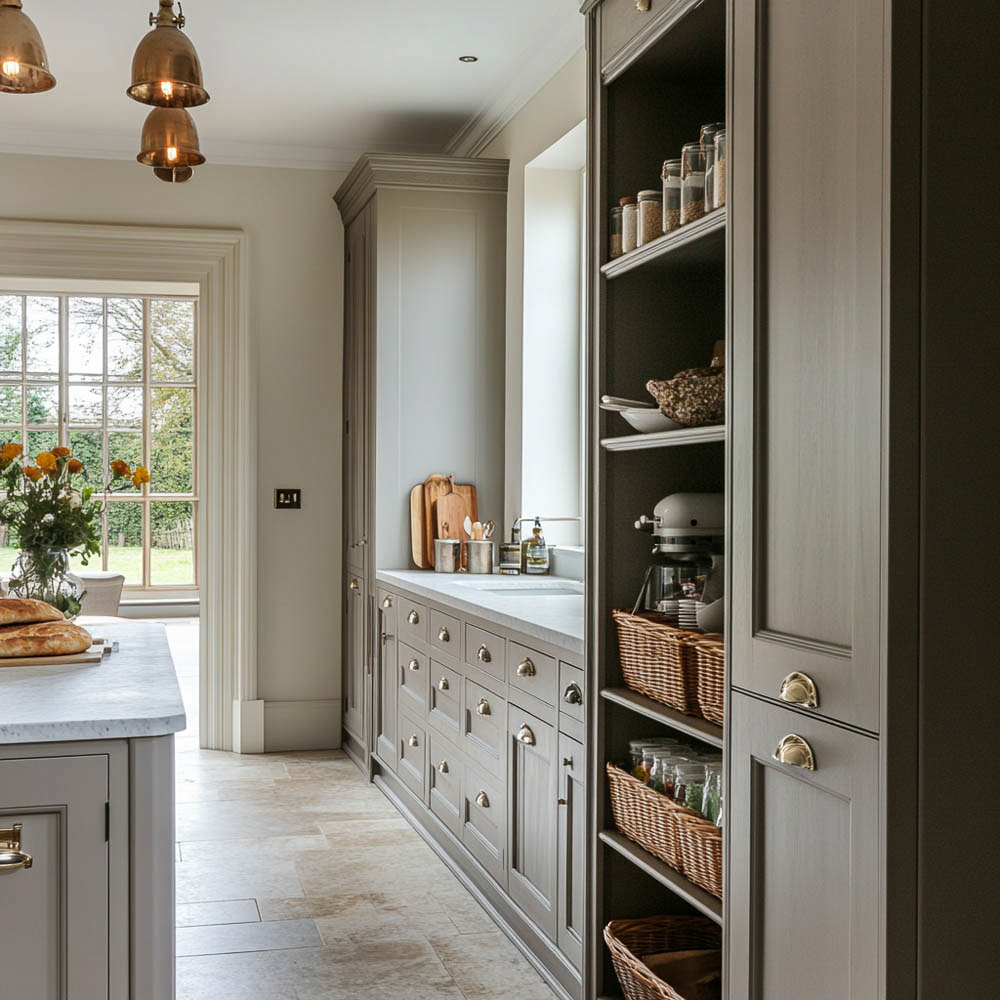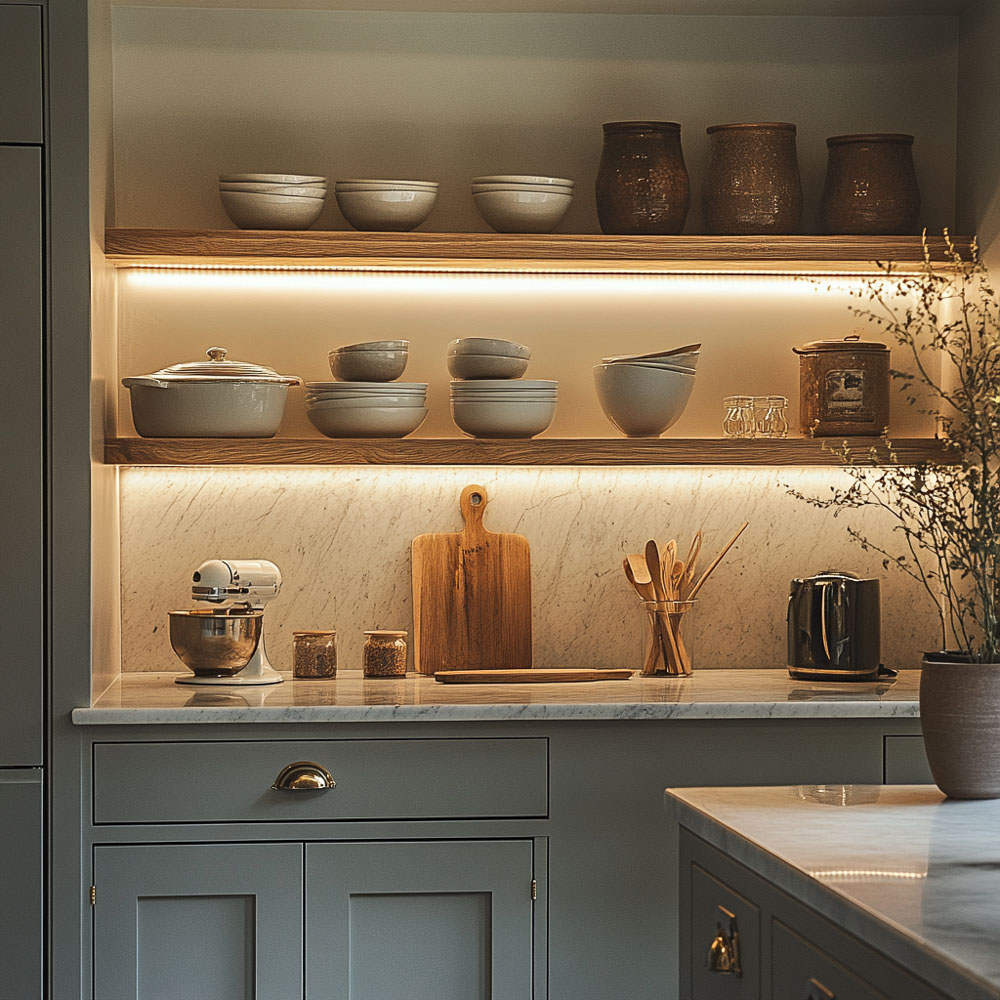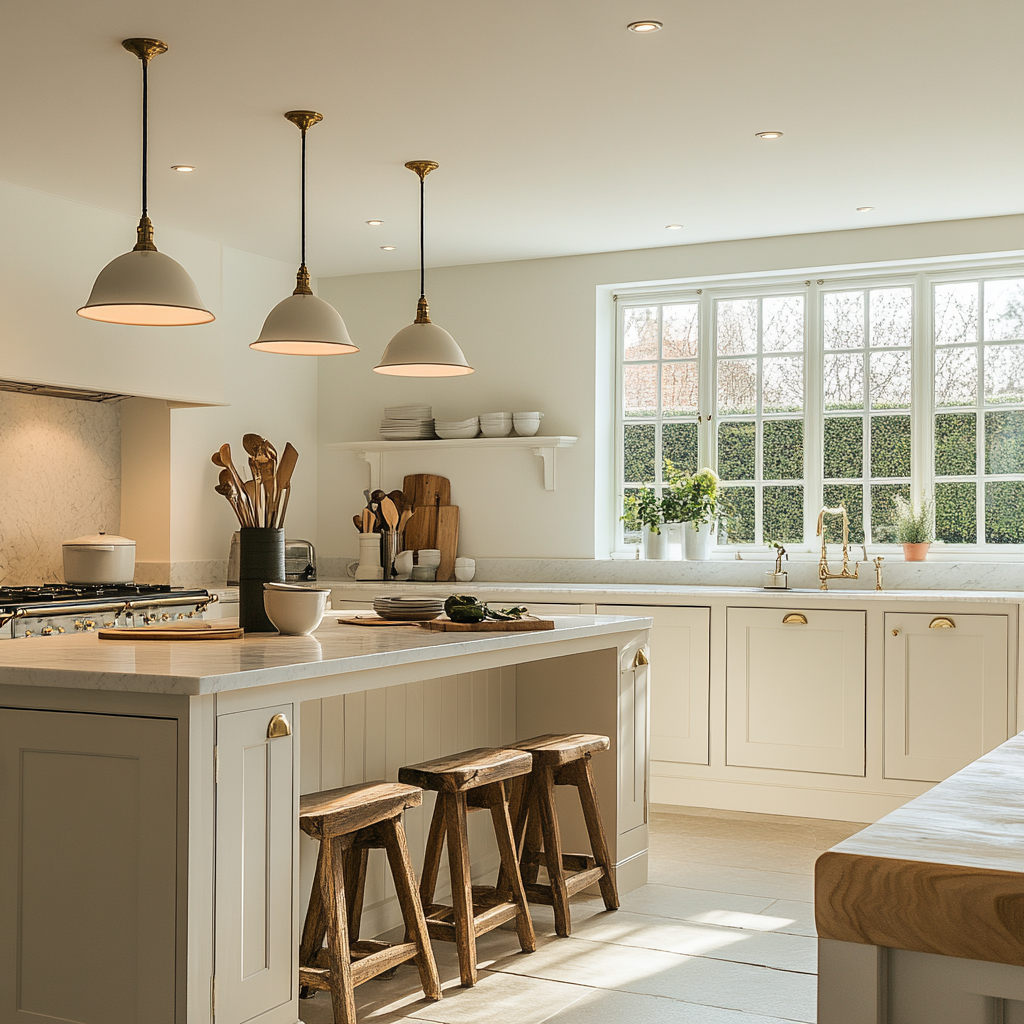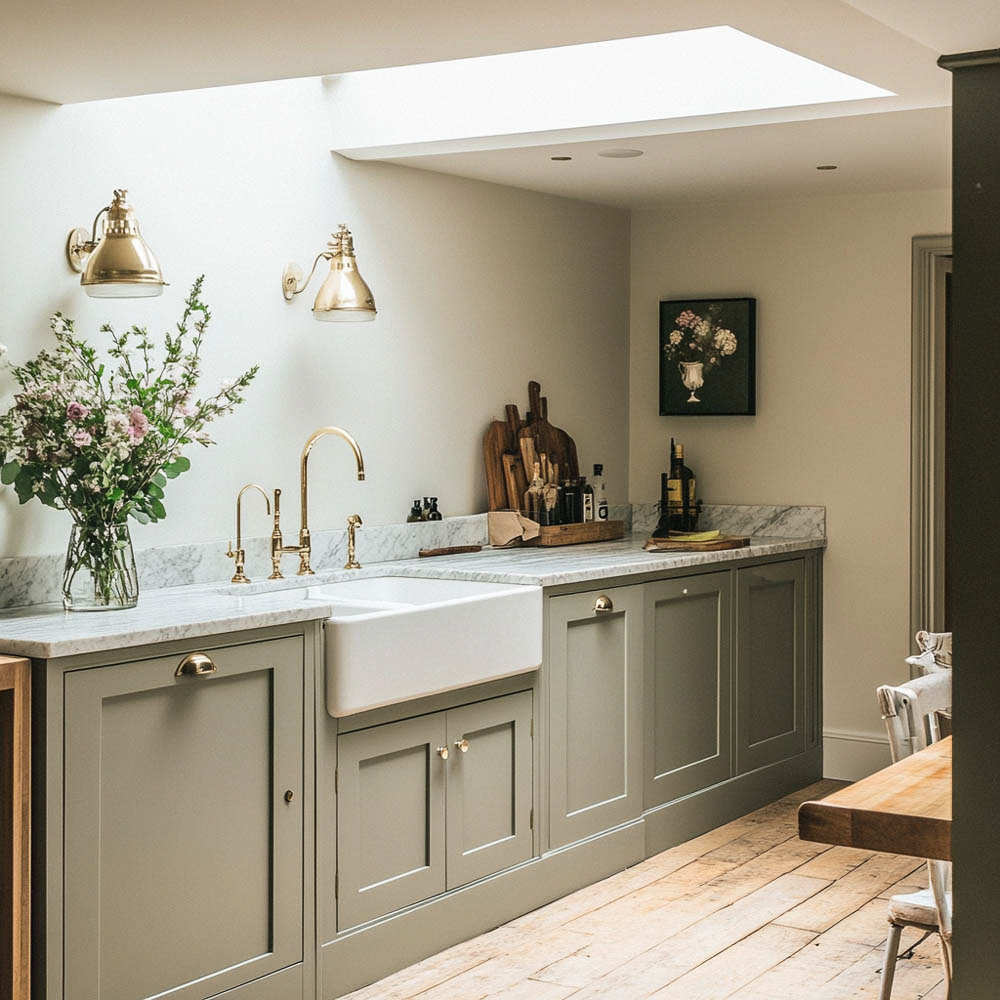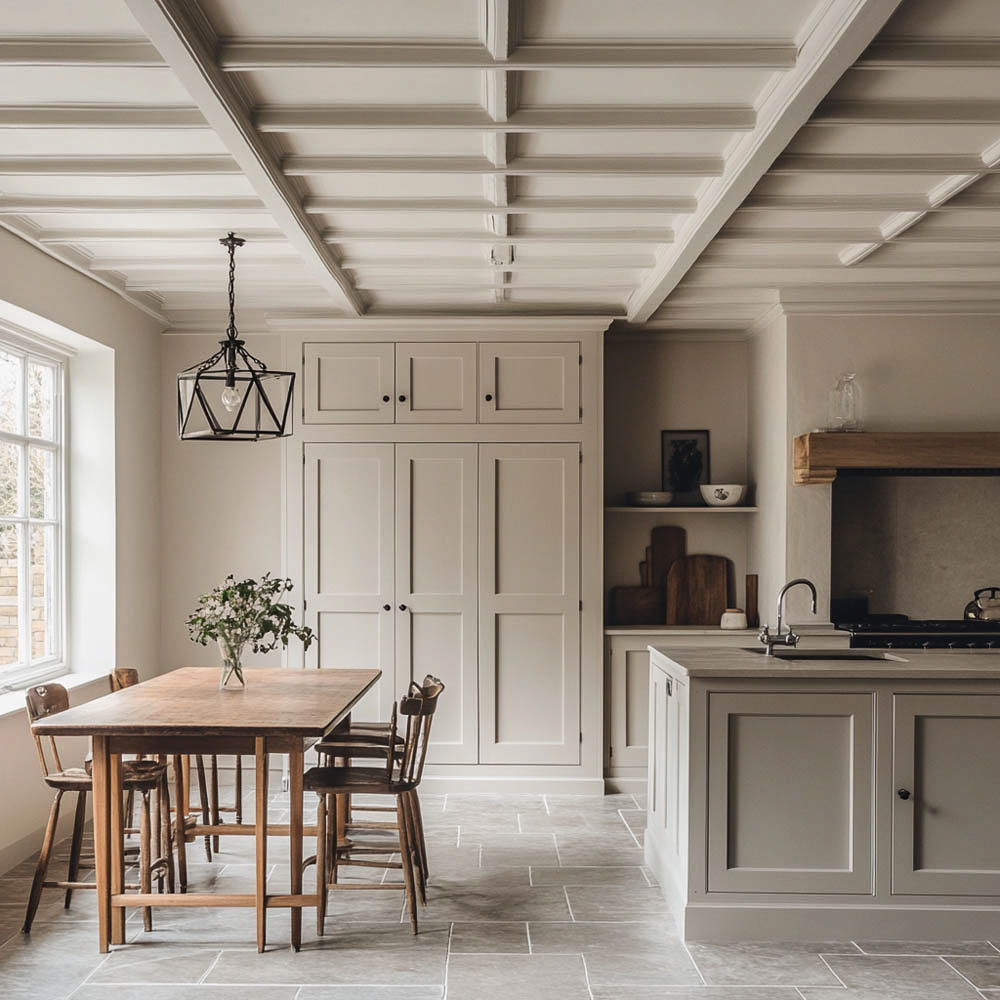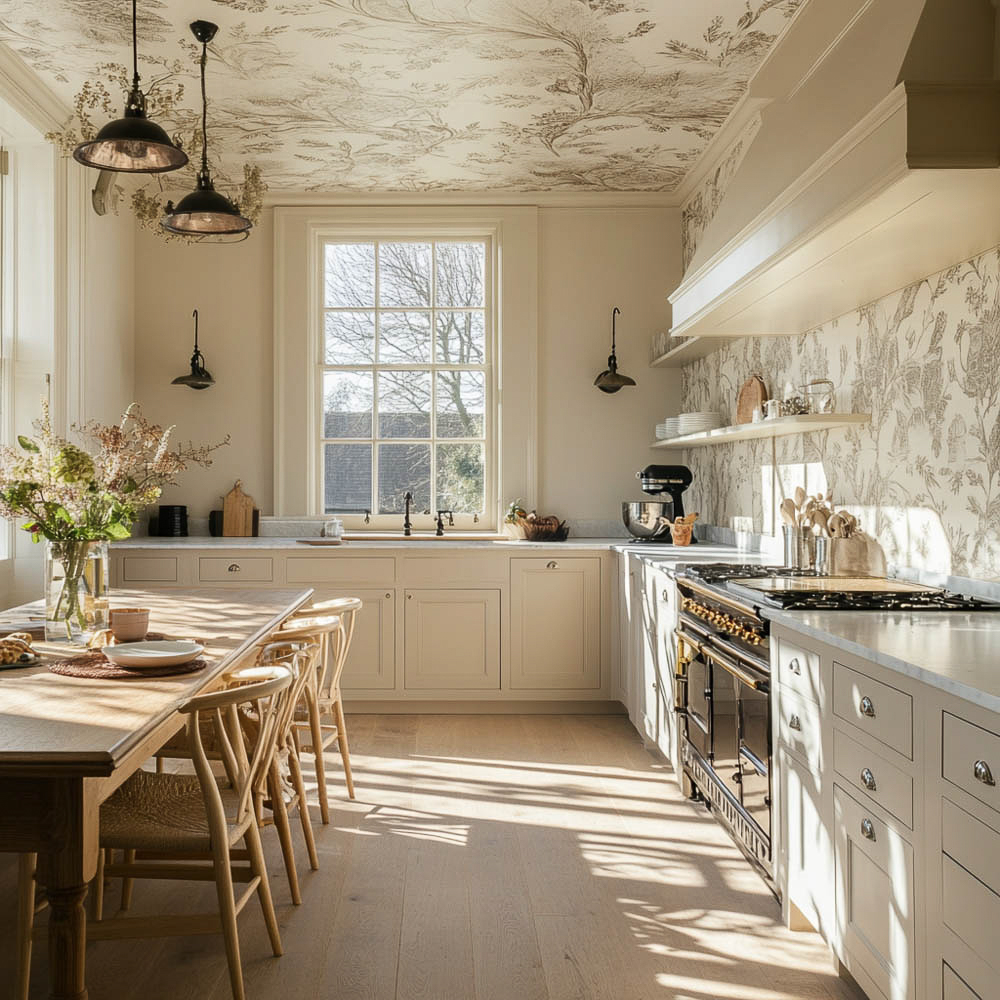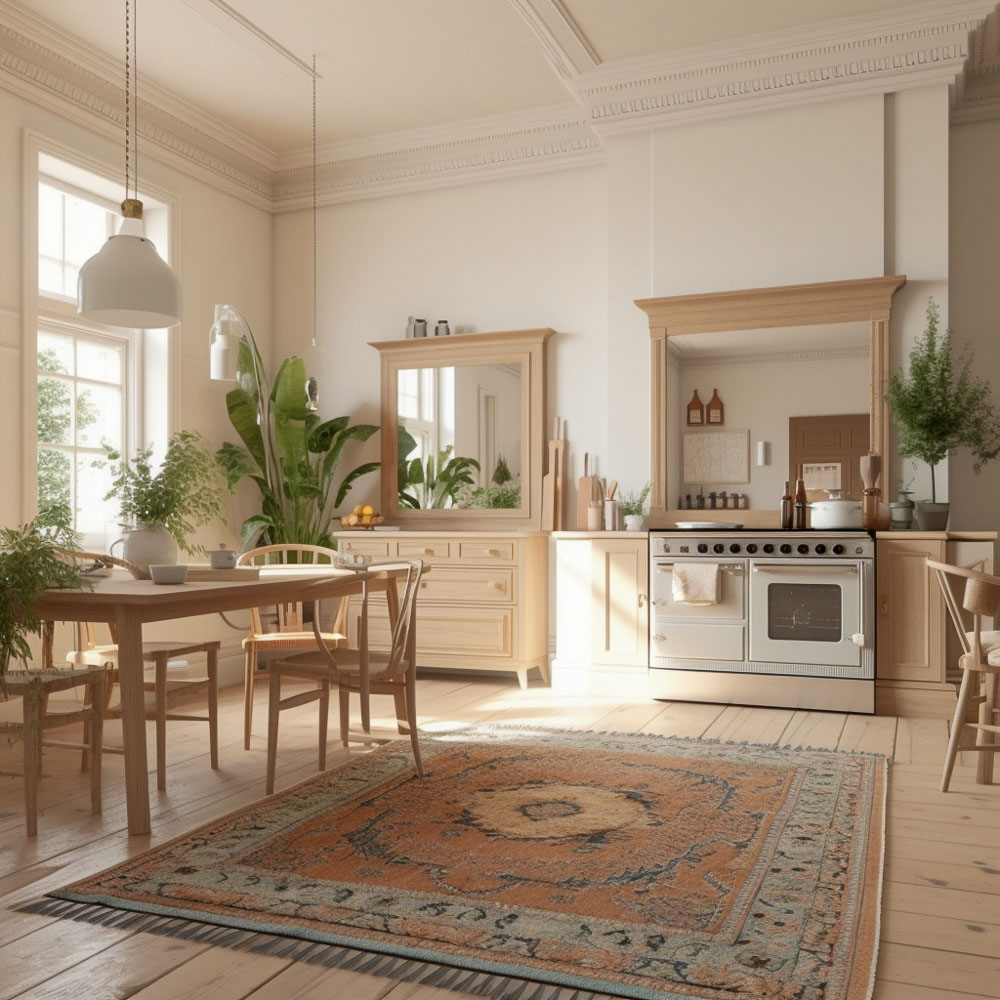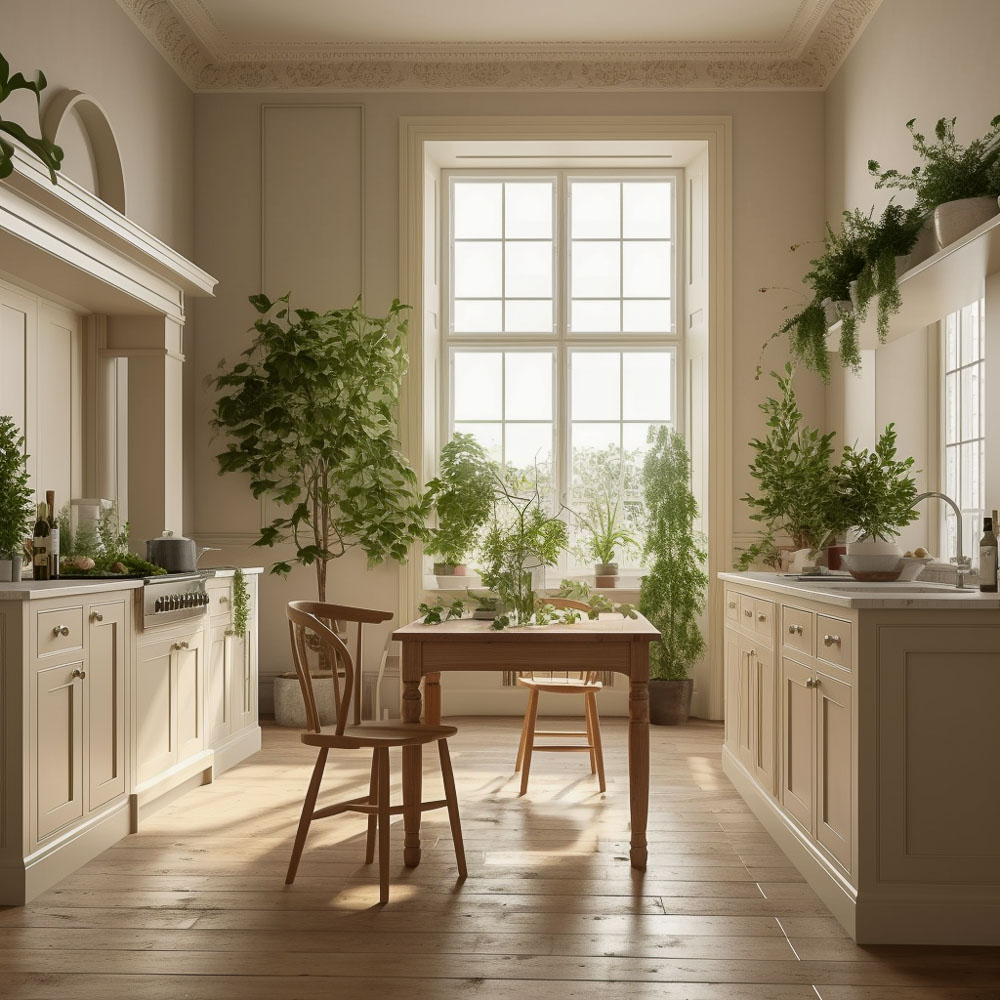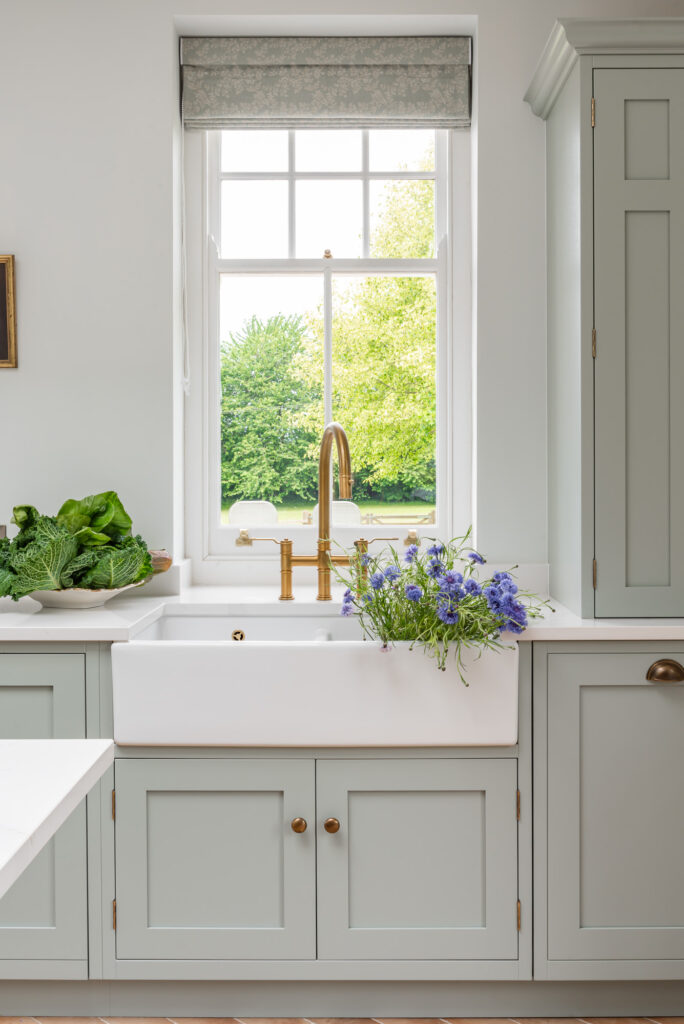High ceiling kitchens can create an open, airy feel, adding a sense of grandeur to the space. However, designing a kitchen with high ceilings requires careful planning to ensure functionality, warmth, and visual harmony. Here’s a guide on how to design an efficient and stylish kitchen that makes the most of those high ceilings.
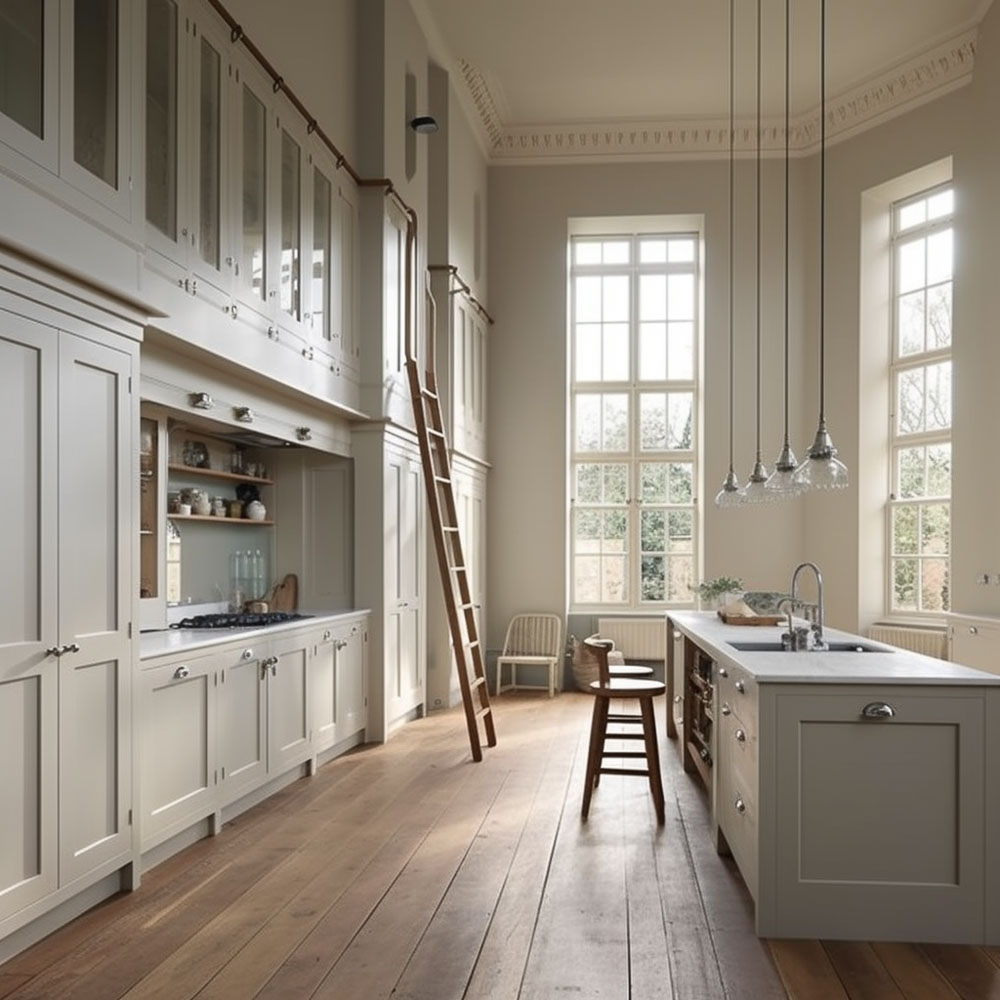
1. Embrace Vertical Storage Solutions
High ceilings provide an opportunity for ample vertical storage, ideal for maximising functionality:
- Tall Cabinets: Install custom cabinets that extend close to the ceiling to maximise storage space. The upper cabinets can store items that aren’t needed daily, while the lower cabinets can hold everyday essentials.
- Open Shelving: Open shelves add both functionality and style. Display items like decorative bowls, cookbooks, or glassware to draw the eye upwards, making the most of the height without overcrowding the space.
- Rolling Ladder or Step Stool: For easy access to higher storage areas, a rolling ladder or attractive step stool is both practical and visually appealing.
2. Layered Lighting for a Balanced Look
High ceilings can make kitchens feel more expansive, but they can also lead to uneven lighting. Use a layered lighting approach for a well-balanced, inviting space:
- Pendant Lights: Oversized pendants or statement chandeliers work well in kitchens with high ceilings. Hang them at eye level or slightly higher over islands or dining areas to create visual balance.
- Recessed Lighting: Install recessed lights strategically to ensure the entire kitchen is well-lit, particularly over work areas such as worktops, the sink, and the hob.
- Under-Cabinet Lighting: Under-cabinet lights provide task lighting for food prep areas and add a warm, inviting ambience that balances the vertical lighting from above.
3. Add Visual Interest with Ceiling Treatments
High ceilings can feel stark without visual accents, so consider enhancing the ceiling design:
- Exposed Beams: In rustic or farmhouse kitchens, exposed wooden beams add texture and warmth, making the ceiling feel lower and the space more intimate.
- Coffered or Tray Ceilings: In more traditional or contemporary kitchens, coffered or tray ceilings bring architectural detail and a touch of elegance.
- Paint and Wallpaper: Painting the ceiling a slightly darker shade or using wallpaper can add contrast and personality, drawing attention upwards while creating a sense of cosiness.
4. Choose the Right Cabinetry Proportions
High ceilings require cabinetry that complements the space without overwhelming it:
- Double-Stacked Cabinets: If custom cabinetry is within your budget, double-stacked cabinets can extend from the worktop to near the ceiling, maximising storage and making the most of the height.
- Mixed Cabinet Heights: Mixing different cabinet heights adds visual interest. For example, you might use taller cabinets on the perimeter with shorter cabinets above the hob or sink.
- Glass-Front Cabinets: Glass-front upper cabinets add an open feel, especially if they’re backlit, giving the room added depth and sophistication.
5. Optimise the Island and Worktop Space
A high-ceilinged kitchen can handle a larger island without feeling cramped, making the island a central feature in the room:
- Large Island with Seating: Choose an island that provides ample worktop space and includes seating for family and friends. High ceilings allow for statement pendants that draw the eye downward and create a focal point above the island.
- Waterfall Worktops: Consider a waterfall worktop for the island, adding visual weight that helps balance the tall vertical space above.
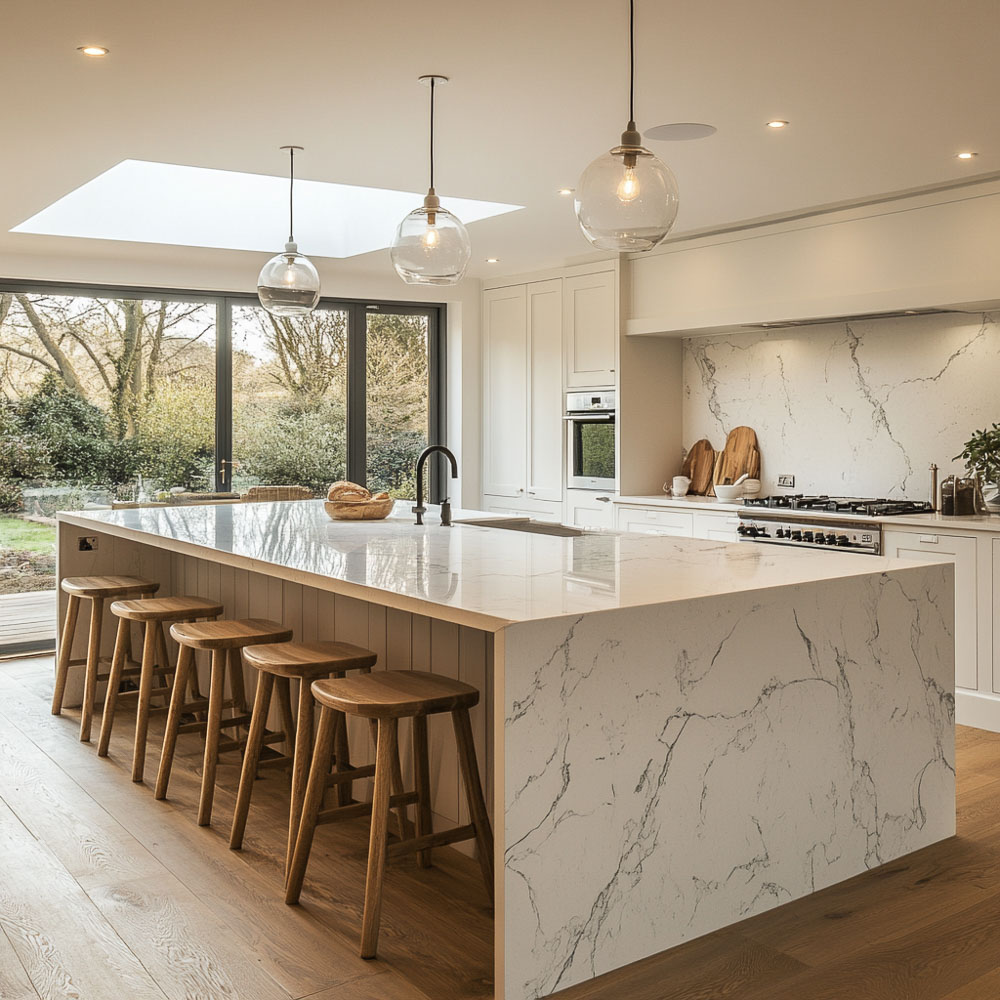
6. Use Colour to Create Cohesion
The right colour palette is essential in a high-ceilinged kitchen to create a cohesive design:
- Two-Tone Cabinets: Use two-tone cabinets to create visual interest while grounding the space. Darker lower cabinets and lighter upper cabinets can draw the eye downward, balancing the room’s height.
- Warm or Bold Accents: High ceilings allow for bolder or warmer colours that might feel overpowering in a standard-height kitchen. Consider accent walls or cabinetry in colours that add warmth and prevent the room from feeling too vast.
7. Add Decorative Elements to Enhance the Space
High-ceilinged kitchens benefit from decorative touches that add warmth and personality:
- Statement Artwork or Mirrors: Hanging large artwork or mirrors on walls extending towards the ceiling helps to fill vertical space and adds character to the kitchen.
- Greenery: Tall plants or hanging planters soften the space and make it feel welcoming. Plants also add life and colour, making excellent use of the vertical space.
- Decorative Range Hood or Chimney Breast: In kitchens with high ceilings, a decorative range hood can be extended upward to become a standout design feature, drawing the eye towards the height of the room. Alternatively, consider a large, traditional open chimney breast or inglenook, which adds architectural interest and a sense of grandeur, giving the kitchen a warm, timeless feel.
- Larger Coving and Moulding: Oversized coving or thicker, more intricate moulding around the ceiling perimeter softens the transition between walls and ceiling, adding an elegant finish. Large coving brings proportion to high ceilings and frames the room beautifully, lending a classic, refined touch that makes the kitchen feel well-rounded and inviting.
8. Soften the Space with Textiles and Sound-Absorbing Elements.
Kitchens with high ceilings can sometimes feel stark or echoey, so adding soft furnishings is key to creating warmth and comfort. Full-length curtains or Roman blinds not only frame windows beautifully but also help soften the room visually. Rugs or runners, especially in front of the sink or island, provide a warm touch underfoot and reduce sound, making the kitchen feel more inviting. Upholstered seating and other textile accents bring texture to the space, creating a balanced, welcoming atmosphere that’s both functional and stylish.
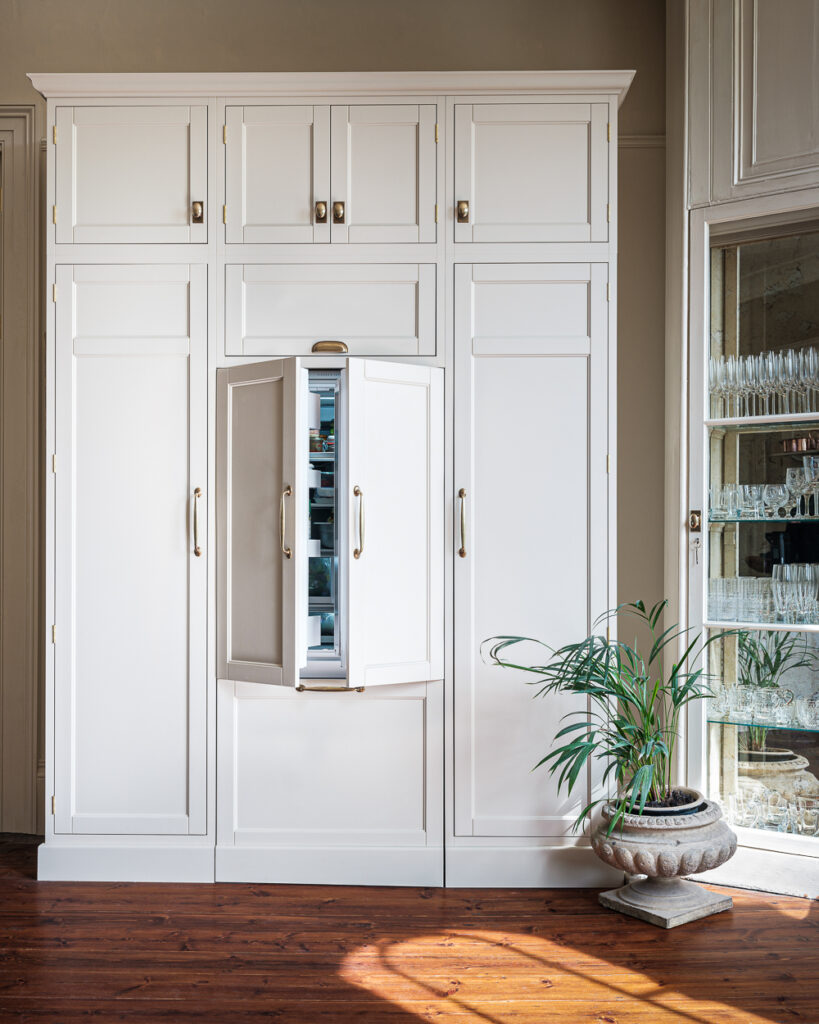
Final Thoughts on High-Ceiling Kitchens
Designing a kitchen with high ceilings is an exciting challenge, offering the opportunity to create a space that is both spacious and warm and inviting. By incorporating vertical storage, layered lighting, and a mix of textures, colours, and decorative touches, you can create high-ceiling kitchens that are both functional and visually captivating. With the right design approach, your kitchen will make the most of its lofty dimensions, becoming a stylish, inviting centrepiece for the home.
 Bespoke made in 10-12 weeks
Bespoke made in 10-12 weeks  National Installation
National Installation  Worldwide Shipping
Worldwide Shipping 